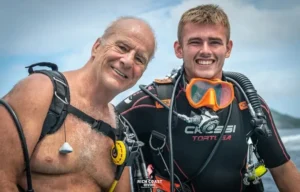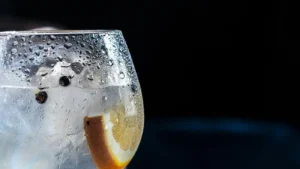Whether you’re celebrating a family milestone, enjoying a getaway with friends, working as a digital nomad, or launching your solo travel adventure; your visit to the rich coast is sure to be memorable. And what could be more memorable than a cool and gentle exploration of life under the sea?
Whether you’re in the hunt for a relaxing drift dive, boost your adrenaline with some currents, or want to see what lies in the deep; Costa Rica has a dive for you. Keeping in mind that the rainy season (May — November) is the ideal time to see the big guys like bull and hamnmerhead sharks, it is also the time when your curly hair will get even curlier in the humidity. Pack a hat and you’ll be fine. Different varieties of the very colorful fish, especially the tiny guys, prefer to come out, come out wherever they are in August-December when the ocean and winds are more tranquil. If you want to have amazing visibility without having to whip your hair back and forth, these are the months for you.
The fantastic thing about scuba diving in Costa Rica is the variety of scuba dive sites. For some travelers, having a number of options to research is a dream come true. Other travelers, however, prefer to get a quick and dirty snapshot of the best sites in the area. If you are the latter, then we’ve narrowed the list to the best dive sites we think will help you get the most out of your time in this beautiful country.
PLAYAS DEL COCO (Coco Beach)
Located on the northwestern Pacific coast in the Guanacaste province, Coco Beach its home to more than 15 different dive sites that cater to both beginner and advanced scuba divers. Each site features stunning topography with steeping pinnacles, naturally formed rocks and boulders, and bright sandy bottoms. There are even small wrecks where you can see fish congregate. The marine life is a feast for your eyes as you observe (but don’t touch!) white tip reef sharks, nurse sharks, different species of rays and eels, and reef fish. Schools of pelagic fish will make you feel like the littlest mermaid and the giant schools of the cutest puffer fish will make your scuba heart smile. Tiny critters like spider crabs, harlequin shrimp and nudibranchs will show you colors so exquisitely vibrant that you’ll never want to put your underwater camera or GoPro away. The best part about Playas del Coco is that it’s where your forever friends at Rich Coast Diving work and live!
Bat Islands
Islas Murcialégos (‘Bat Islands’ in Spanish). The Big Scare. Whatever you want to call it, this is where advanced divers go to see bull sharks. This protected marine preserve means fishing the area is prohibited so the pacific mantas, enormous schools of jacks, eels and other fish can thrive. Make no mistake — the bull sharks are the Beyoncé, the Steven Tyler, and the Harry Styles of this site. This is where the bull sharks come to get cleaned by other fish, so it’s more like a stop by their favorite carwash than the ferocious descent you see at an all-inclusive resort buffet. Black Rock is the second dive on this trip and the species of fish vary at both the dive and during your safety stop. Keep in mind that Bat Islands is the furthest dive site from shore, so there’s a good chance you’ll spot dolphins playing alongside the boat when you’re not soaking in the sun on the bow or taking pre-dive nap on the stern.
Catalinas Islands
“Cats Islands” is an archipelago, an area that contains a chain or group of islands. Like most archipelagos, the 7 islands that form Cats Islands were created when volcanoes erupted from the ocean floor. Additionally, a large continental shelf extends from the coastline to a drop-off point that descends to the ocean floor. Algae, plants and other organisms that fish feed on grow on these continental shelves, attracting a wide range of marine life. Currents tend to be stronger here, but manageable for divers at all levels. You won’t want to miss the huge oceanic mantas, Pacific blue fin tuna, large schools of grunts, snappers, octopi, sea turtles, scorpion fish, other pelagic specie, and varieties of shark (though, not bull — go to Bats Islands to see those beauties!). This is another location that’s a bit of distance from shore, giving you the chance to see jumping devil rays, dolphins or humpback whales on your way to and from the site.
COCOS ISLAND
This is where the hardcore divers go to dive. If you are a beginner, this may be the site you work up to as you build your scuba diving PADI certification portfolio. Forget a goal weight — this is your goal site! And it will be a goal because the sole method for diving the island is via a liveaboard. Think of a liveaboard as a college dorm on the ocean where you only have 1 amazing subject to study. Liveaboards are limited so you’ll want to book this trip as far in advance as possible. Some divers have booked as early as a 1 year in advance!
To say the dive is worth the wait is an understatement. Cocos Island’s remote location results in the marine life being largely unbothered by humans, their boats, and fishing. They’re everywhere. With 20 dive sites that are easily accessed via the liveaboard, divers get to experience nearly every type of dive imaginable. Drift, deep, walled, bluest of blue water… it’s all at Cocos Island.
Why Cocos? Three words: Scalloped Hammerhead Sharks. One dive site, Bajo Alcyone, is best known for seeing groups of hammerhead sharks in the hundreds as they descend to below the thermocline. This is one of the reasons why advanced divers do best at this site. When you combine the colder temperatures below and choppy water above with more intense currents and gigtantic schools of big fish; experience matters. The shark enthusiasts will be happy note that our shark friends make appearances at Cocos Islands in the form so silky, tiger, blacktip, whitecap, reef, and guitar sharks. Marboe, manta and eagle rays also swim around for places to get clean, too. A whale shark could make an appearance, too, along with eels and jacks.
If the makers of “Jurassic Park” found this as the perfect place to film movie scenes, then it’s probably worth a visit.
Cocos Island Shark Research Expedition
Rich Coast Diving has an exclusive partnership with Costa Rican biologist, Randall Arauz, Science and Policy Advisor with Marine Watch International (www.marinewatch.org) to coordinate 7-day dive research expeditions to Cocos Islands. Live and scuba dive with the scientists from CREMA, The SeaChange Agency, and Turtle Island Restoration Network to learn about the latest science and policies in shark conservation. Participants will support researchers in tagging and gathering tissue samples of turtles, hammerhead sharks, galapagos sharks, blacktip sharks, silvertip sharks, tiger sharks, whale sharks, manta rays and eagle rays. This is an excellent opportunity for early talent to determine if this is the right career path or for those with a passion for shark conservation to have a direct impact on the industry.
CAÑO ISLAND
Isla del Caño can be found in the southwestern Pacific coast, in the Puntarenas province. Located near the sleepy little town of Drake Bay and an hour boat ride from the more populated area of Uvita, the clear waters attract all manner of ocean lovers. The protected area and biological reserve limits the number of guests on and to the island in order to maintain the biodiverse flora, fauna, coral and marine life. Ecotourism is limited to activities like humpback whale watching, hikes limited to 20 people on the trails at time, snorkeling and scuba diving. In fact, diving is limited to 10 people in designated areas at a time. Divers can appreciate not having to share the ocean with many other people when they take a peek at manta rays, dolphins, sharks, barracudas, nearly 20 species of corals, puffer fish, seahorses, the occasional manatee, sea turtles, and oodles of fish on the island. It’s kind of feels like getting a private experience when you dive here.
If you want advice on the optimal time to scuba dive in Costa Rica based on the marine life you hope to see, the ocean conditions, weather, and adventures to be had on dry land; feel free to reach out to our team. Rich Coast Diving is not only here to provide you with a superior diving experience, but also to help you fall in love with the place we call home.
Written for Rich Coast Diving: https://www.richcoastdiving.com/




